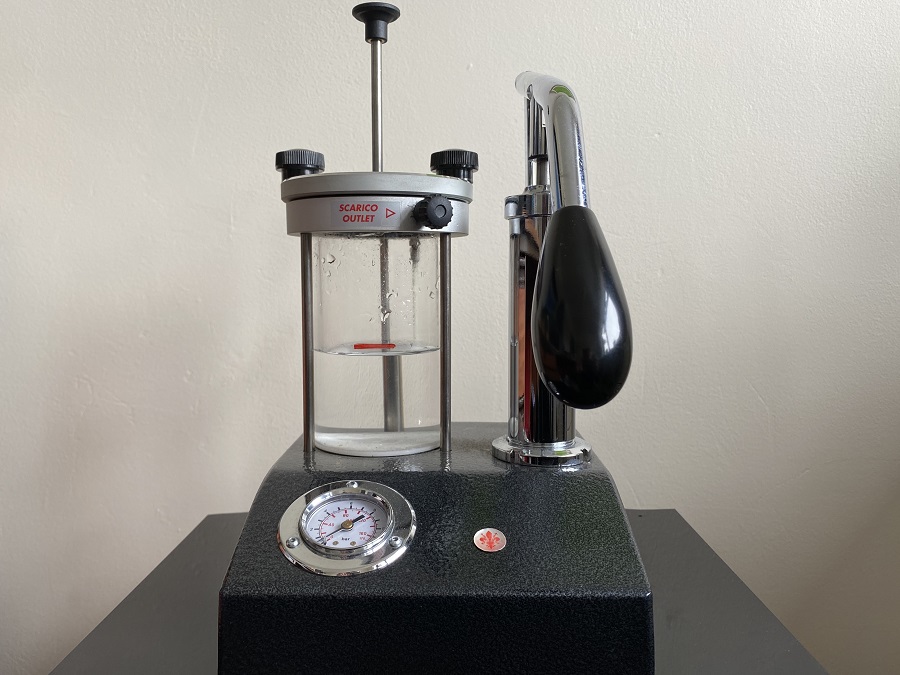Water Resistance in Wrist Watches
Almost all watches made nowadays are made to be water-resistant to a certain amount of pressure. It all began in 1926 when Rolex released their Oyster case featuring a screw-back case and screw-down crown, this was the first wristwatch that claimed to be dust-proof and water-resistant.
Since then it has been a selling point on watches and the standards have got higher and higher a century later! For example, the Rolex Deepsea Sea-Dweller ref.126660-0002 (2018 Baselworld release) is water resistant to 3,900 metres!
How Water Resistant is My Watch?
The most common certification on a wristwatch is 3 bar, which means it would be resistant to 30 meters underwater.
Wearing a watch with its 3 bar certification makes it possible to do daily chores wearing it, such as washing up and showering, personally, i wouldn’t go diving with a watch with this amount of water resistance, even if you definitely were not going 30m underwater, my reason for this is most 3 bar watches have snap back cases and can sometimes unreliably pop off if the pressure is changed.
Another reason for this is if you haven’t had your watch tested recently, you don’t know the condition of your seals, an old seal can make it so much easier for the snap back to…snap off. Regardless of the certification, it is best to view 3bar as ‘splashproof’ rather than ‘submerge-proof’.
Watches that have cases made for 5-bar and 10-bar usually have screw-back cases and crowns so they are much more reliable for divers.
So how do you know if your watch is able to do what it says on the case back and keep water out? Well, the obvious answer is to take it swimming, but the less risky answer is to take it to your local watchmakers.
They will test your watch and see if it needs resealing with a maintenance service, but we’ll get to that part in a second.
You might be confused as to why your watch, which says it’s water resistant to 100m, would need such a service considering the amount you’ve already paid for it.
Well unfortunately nothing stays perfect forever, as time goes on, wear and tear will take its toll on the watch and seals will eventually start to disintegrate.
If you accidentally drop your watch you could end up with a mis-shaped case that lets in a tiny amount of vapor through the bezel, making condensation appear on the inside of the glass.
There are countless reasons for a watch to need maintenance. This is why it’s so important to keep on top of the water resistance capabilities of the watch.
It is recommended to have your watch tested at least every 6 months, especially before trips to the beach or pool, and a full maintenance service every 1-2 years. This will ensure the seals are in good condition and will not let you down.
How Do You Test If A Watch Is Water Resistant?
So there are two tests that your watch can go through when being tested. One is a dry test and one is a wet test. If your watch has been brought in for a test and not a maintenance it will be done on the dry test to ensure no damage is done to the watch if it isn’t water resistant.
What the dry test does is use air in place of water, as the pressure in the chamber goes up, the case back will become more compressed.
The compression of the case back is being measured constantly by sensors. If the compression starts to build but then drops, then that means air is somehow getting into the case, therefore the watch is not water resistant.
The other test is a wet test. This will be done at the end of a maintenance service to ensure the watch is water resistant, not to say the dry test is unreliable, but a real-life setting will always be more valid, and knowing the watch is safe is water will put the watchmaker much more at ease!
This test works the same way as the dry test, the water pressure is cranked up and usually, the watch sits in the sub unaffected.
The bad news is only if bubbles start to come from the affected area, which shows water trying to enter the watch! If this happens the only thing you can do is let the pressure down, which will inevitably let some water in, rescue the watch and try it out.
Why Is A Watch Re-Seal So Expensive?
You may wonder why the maintenance is so pricey seeing all that’s been done is rubber seals being replaced. Well, it’s not as simple as in with the old and out with the new.
During the maintenance, the whole watch case will be taken apart and cleaned. The bezel mechanism will sometimes have to be changed if the spring has been damaged due to wear and dirt.
New seals on the crown, bezel, glass, and caseback will have to be carefully greased and replaced, the watchmaker will see to the fact that there are no imperfections of these new parts as it could be detrimental to the watch’s seal.
The water resistance capability of the watch is not just down to these seals, however, as the crown and tube have to be replaced too as crowns can wear down very easily if handled a lot.
Depending on the material and brand, crowns can go well into £200 in price, which will sometimes be added onto the price of your maintenance.

